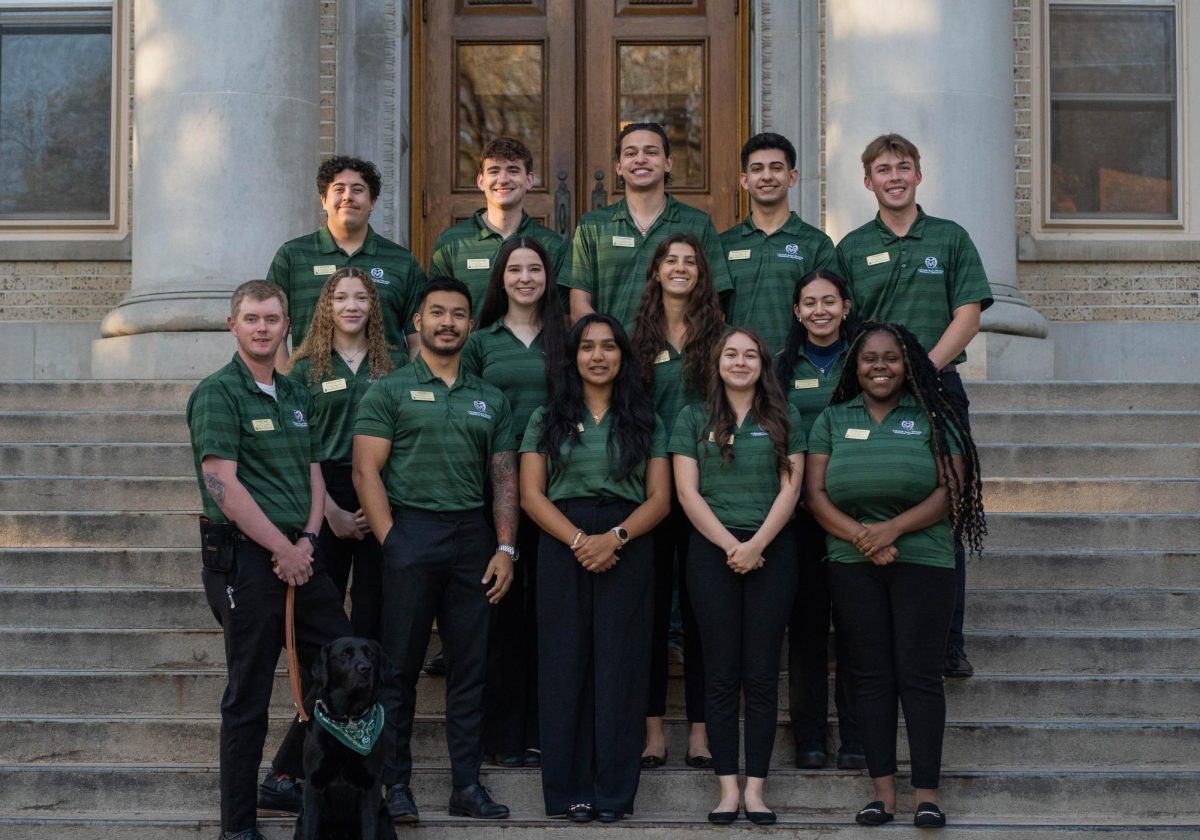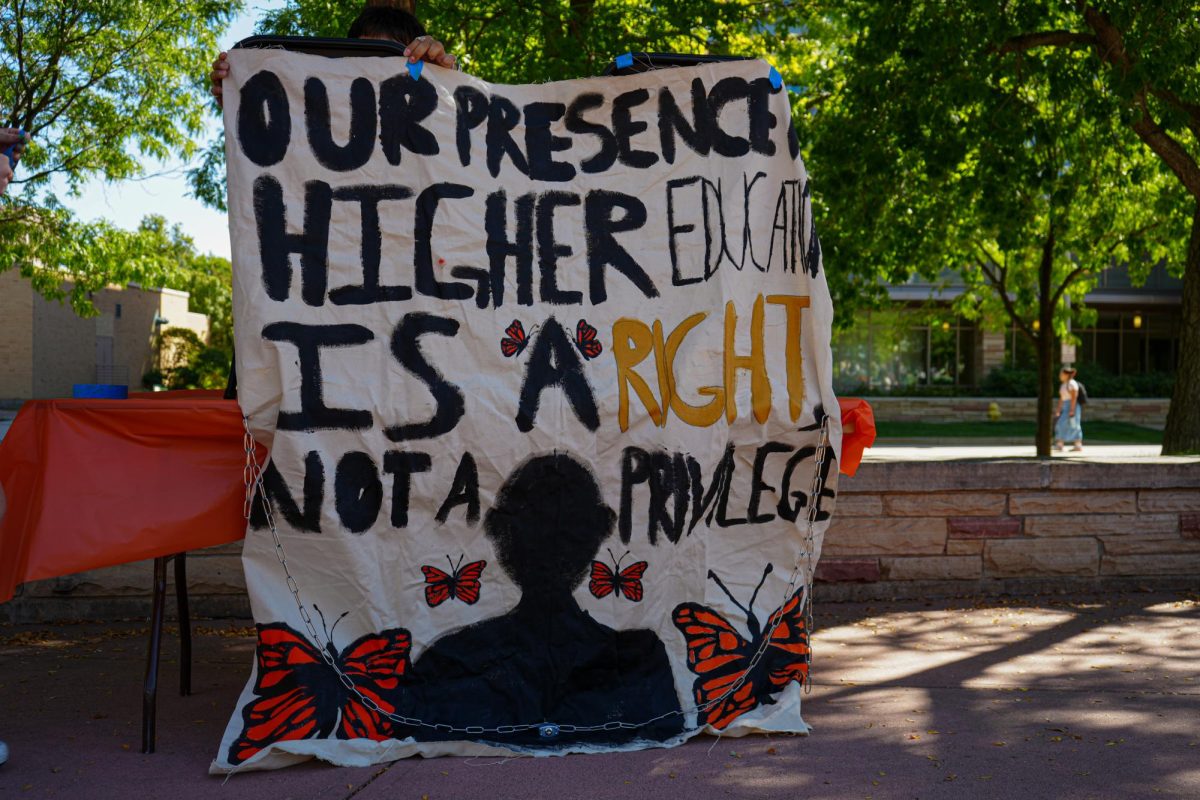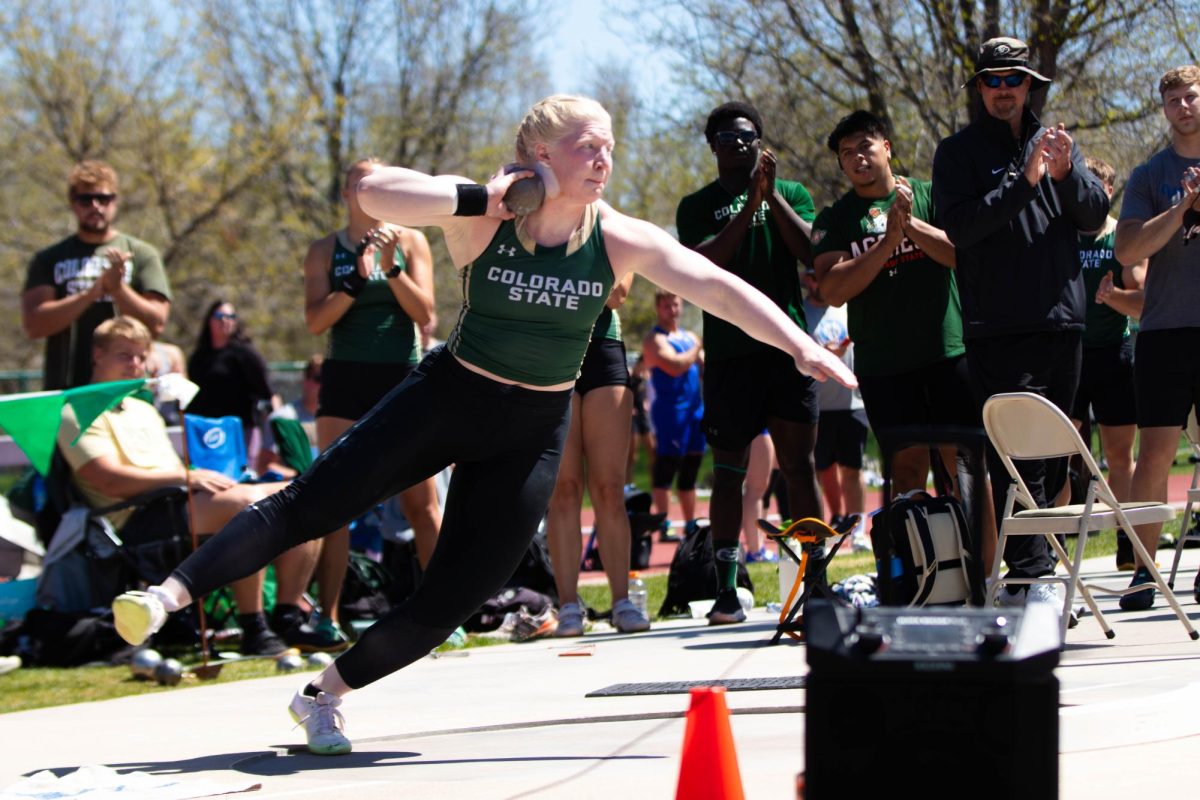Birds have migrated to Fort Collins, and they’re not the kind that honk at you for bread crumbs.
These are electric scooters from Bird, the company exclusively contracted for the City’s one-year e-scooter pilot program.
Students may have noticed the 500 e-scooters that made their debut Oct. 23. The scooters were placed around transit stops in the City and around the Colorado State University campus. They were also placed throughout Old Town.
To ride a scooter, the Bird app must be downloaded, and users must register for an account. Users can then find an available scooter through the map function and scan the scooter’s QR code to begin their ride. This will typically require a credit card and identification, such as a driver’s license.
Rides start at $1 and cost between 25-30 cents per minute afterward, plus tax, for standard users. A roughly 10-minute ride from the Lory Student Center to Old Town Square would cost about $4.
Because of the problems rideshare scooters have caused in other cities, including Denver, the City and CSU rolled out a list of regulations to go along with riding and regulating e-scooters. Bird will help enforce these measures, and its users are subject to fines if they do not comply.
What are the rules for riding an e-scooter?
|
Riding zones |
On CSU campus
Around Fort Collins
|
|
Dismount zones |
The City and CSU both have dismount zones, which apply to e-scooters as well. On campus, that zone is essentially all of the pedestrian mall from Yates Hall to the LSC. Using geofencing technology, Bird scooters will stop themselves slowly when entering a dismount zone. |
|
Slow zones |
CSU has marked a number of “slow zones” with signs around campus, saying bikes and scooters must be slowed to 8 mph. Bird scooters will do this automatically, but privately owned scooters must slow down too. These zones do not exist outside of campus. |
|
Times of availability |
You can turn on Bird’s e-scooters only during certain hours:
If a user starts a ride before the ending time, they will be allowed to finish the ride. |
|
Parking |
Scooters must be parked upright, on a hard surface, preferably with bikes and bike racks. On campus, scooters must be parked at a bike rack. They should be parked in a non-intrusive sidewalk space, not in a dismount zone, and cannot be parked on the street. The parked scooter may not:
Bird can fine users who park their e-scooters incorrectly. You must take a photo of the correctly parked e-scooter before being able to end your ride. |
|
Moving scooters around |
Bird e-scooters cannot be taken onto City transit, including Around the Horn and the MAX. In order to preserve the floors and walls of buildings, CSU does not permit scooters in any University buildings. |
|
Helmets |
Helmets are not required but are strongly encouraged by Bird. The company will be handing out 3,000 free helmets on campus as part of its agreement with CSU. People can also order a free helmet from Bird and only pay for the cost of shipping. |

Company staff, or “Bird watchers,” will be going around campus and the City, answering questions and helping to make sure Birds are ridden and parked correctly. The Bird app also has a “community mode,” where people can submit reports of badly parked Birds and damaged Birds.
In an email to The Collegian, Noah Fishman, vice chair on the Alternative Transportation Fee Advisory Board, wrote, “The current administration is already working toward and encouraging increasing the safety of students for all modes of transportation,” including e-scooters.
“I am looking forward to finding creative solutions for allowing the onboarding of e-scooters to be a smooth and safe process,” Fishman wrote. “I also have always been a passionate advocate for sustainability, so I look forward to finding more ways to replace car usage on campus with more sustainable modes of transportation.”
Do I get a student discount?
Yes. Anyone who registers with a colostate.edu email address gets 50 cents off their first ride.
The Fort Collins Bird access program allows low-income riders to take 50 free under-30-minute rides per month. Bird also offers a discount for active duty U.S. military service members and veterans, allowing them to ride without the initial $1 base fee.
People can also pay for Bird using debit cards.
Why did it take so long for scooters to arrive?
“In late December, we sent a letter to all the scooter companies we knew of and said, ‘Look, if you drop these things off, we’re going to impound them.’” -Aaron Fodge, CSU alternative transportation manager
When fleets of e-scooters were rolling into cities unannounced last fall, Fort Collins remained notably scoot-free.
That is because, despite scooter companies calling anyone on CSU to get permission to launch scooters, the University and City wanted to establish their own regulations first, said Aaron Fodge, CSU alternative transportation manager.
“In late December, we sent a letter to all the scooter companies we knew of and said, ‘Look, if you drop these things off, we’re going to impound them,’” Fodge said. “So that bought us some time.”
The University then worked with the City to create new regulations while Colorado House Bill 19-1221 declassified e-scooters from “toy vehicles.” The bill allowed e-scooters to go on roadways.
After City Council passed the regulations, the City and CSU issued a joint request for proposal for a one-year e-scooter pilot, Fodge said. Eleven companies expressed interest, and six companies applied. Out of the choices, Bird secured the final contract.
“Fort Collins residents seek a more equitable and convenient way to get around town, and we’re excited to work with the City to begin offering a more affordable, reliable and sustainable alternative to sitting in traffic,” said Arthur Ortegon, a senior manager at Bird, in a press release email.
What do scooters do for students?
Fodge said e-scooters provide for students in four key ways.
- They are an affordable way to provide access to campus. In addition to buses, skateboards and bikes, e-scooters are now another form of campus transportation.
- They are fit for cross-campus trips. Students can use them to get to the University Center for the Arts or the Veterinary Hospital quickly and with little effort.
- They support transit by closing first-mile/last-mile gaps. Scooters will be located around the MAX transit stops so people can ride them to final destinations not immediate to the bus stop.
- They can help students keep their parking spaces. For students who drive but may need to make a trip off campus during the day, such as for lunch, they can take a scooter instead of giving up their parking spot.
How sustainable are e-scooters?
Bird’s contract requires that scooters be as sustainable as possible, said Amanda Mansfield, transportation planner with FC Moves. Bird’s own company goal is to have net-zero carbon emissions.
While the e-scooters themselves are zero emissions, they are gathered up every night after curfew and redistributed to set locations the next morning.
Bird tries to minimize the energy use in collecting the scooters by using electric vehicles and electric trikes and by implementing strategic gathering plans, Mansfield said. They also buy carbon offsets, which are donations to support programs designed to reduce emissions.
Where can I find scooters to ride?
Most Bird scooters are located in higher-usage areas, Mansfield said. That would include along the MAX and downtown. For the launch, about 250 of the scooters were relocated to the CSU campus every morning.
Using daily to weekly data, the scooter launch locations will be adjusted throughout the program. Bird staff will rebalance the distribution of the scooters throughout the day.
As part of its contract, Bird must also locate scooters in areas accessible to historically underserved communities.
“They are spread throughout the community,” Mansfield said.
Samantha Ye can be reached at news@collegian.com or on Twitter @samxye4.










